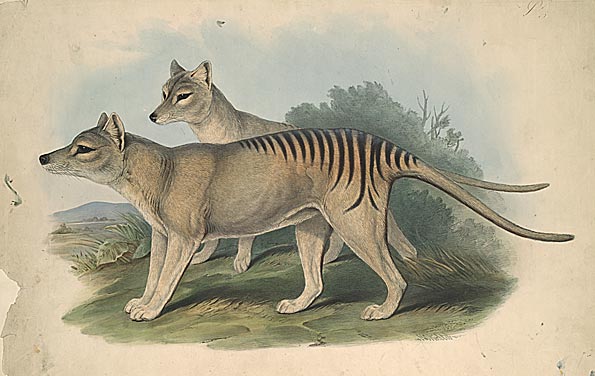 Male and female thylacines, 1841
Male and female thylacines, 1841
TLF ID R3226
This is a 36 cm x 55 cm hand-coloured lithograph of a pair of thylacines (‘Thylacinus cynocephalus’), commonly called Tasmanian tigers, against a background of small bushes and an open plain.
